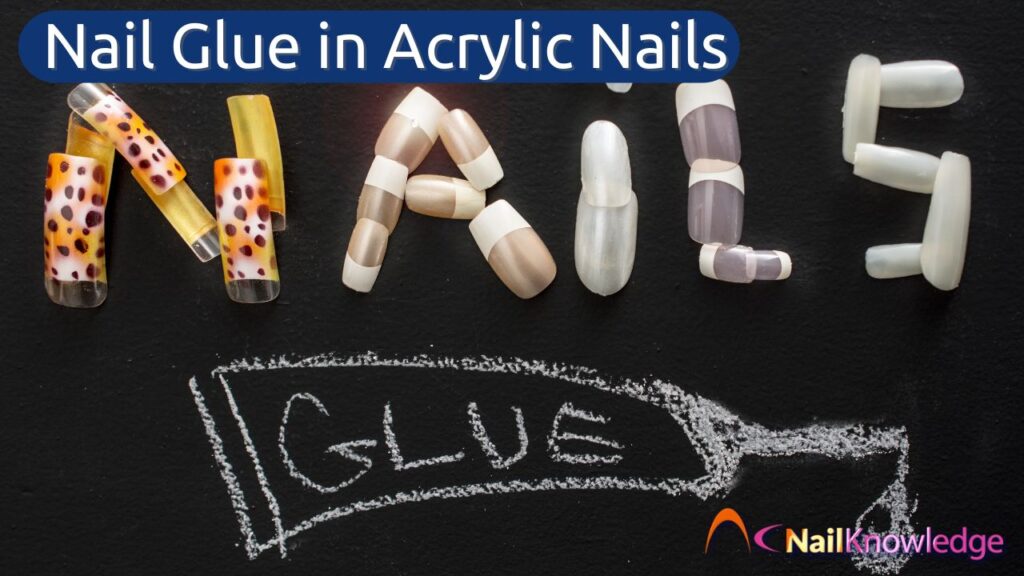Understanding the chemistry behind our products, particularly the use of nail glue in acrylic applications, is key to ensuring safe and long-lasting nail enhancements. Is it safe to use nail glue to attach tips to the free edge before applying acrylic? Yes, this is a long-standing, recognised method in the nail industry and is perfectly safe when done correctly.
Understanding the Chemistry of Nail Products
Acrylates vs. Methacrylates
Nail glue and liquid monomer & powder polymer, also known as acrylic, are both derived from acrylates, a class of fast-reacting, strong-bonding compounds widely used in the nail industry.
- Acrylates, like those in nail glue, are acrylic acid derivatives designed for rapid bonding and strong adhesion, enabling quick setting.
- Methacrylates, found in acrylic liquid monomers, include an additional methyl group, making them slightly less reactive. This slower curing time enhances durability and strength, perfect for sculpting nail enhancements.
Why This Matters
The chemical compatibility of nail glue and acrylic enhancements, due to their shared acrylate-based properties, allows for seamless adhesion and structure. However, these acrylates are monomers, which can be allergens. Improper use may lead to irritation or allergies over time. Hence, correct application and knowledgeable, safe usage are crucial.
Best Practices for Using Nail Glue in Acrylic Nail Enhancements
While using nail glue and acrylic together is a standard technique, correct application is essential to ensure longevity, safety, and client protection.
- Use a Cosmetic-Grade Nail Glue: Always choose a professional, cosmetic-grade nail glue designed specifically for nail enhancements. Avoid generic “super glue,” which may contain too-strong bonding agents harmful to the nail plate.
Correct Nail Preparation
- Preparation is Key: The nail plate must be clean and dry before tip application. Gentle buffing removes surface shine for best adhesion, but over-filing should be avoided to maintain the natural nail’s integrity.
Avoid Skin Contact
- Safety First: Nail glue and liquid monomer should never touch the skin as prolonged exposure increases the risk of developing irritation or allergies. Remove any accidental skin contact immediately to prevent prolonged exposure.
Use the Correct Liquid-to-Powder Ratio
- Balance is Essential: Maintaining the correct monomer-to-polymer ratio is crucial when applying acrylic over the glued tip. Too much liquid leads to improper curing, while too much powder can create brittle, weak enhancements.
Minimise Overexposure & Maintain Proper Ventilation
- Health Precautions: Working in a well-ventilated area and following manufacturer guidelines are vital to avoid sensitisation and allergies. Encourage proper hand hygiene for both the technician and the client to minimise prolonged product contact.
Final Thoughts and Recommendations
Using nail glue to attach tips to the free edge and reinforcing the structure with acrylic is a well-established, safe, and effective method—provided it is done with the correct technique and professional-grade products.
Key Takeaways:
- Always use professional products.
- Follow best hygiene and application practices.
- Respect the chemistry behind the products to protect yourself and your clients.
- Minimize skin contact and overexposure to prevent allergies and irritation.
When done correctly, this method provides strong, durable, and safe enhancements that clients love! provides strong, durable, and safe enhancements that clients love! 💅✨


